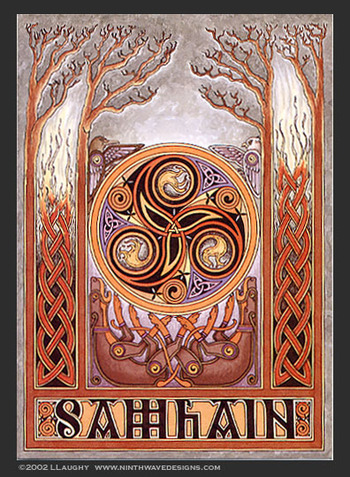By Robert Pigott
BBC News religious affairs correspondent
In a riverside meadow in the Dorset town of Weymouth, a witch is using a broom to sweep a sacred circle in the grass.
The rest of the coven stand, some in hooded gowns, in a circle around an iron cauldron where a fire is burning.
They've met to celebrate Samhain, pronounced "sah-wen": the turning of the year from light into dark.
Many think of Halloween as a time of ghouls and ghosts, and for some retailers it has become the third most lucrative event of the year.
It is the time of year when some churches remember the souls of the departed.
For the witches of Weymouth it is one of their most important religious festivals, a time when they believe the barriers between the physical and spiritual worlds are at their thinnest.
They invite the spirits of north, south, east and west into the circle, and cut apples to share with the spirits of people who have died.
The leader of the coven, Diane Narraway, bids farewell to the goddess of light, and kneels before the head of a horned ram, holding her hands out as if to a flame.
"I kneel before... the horned god, Lord of Witchdom, as we welcome him back to reign over the dark months," she says.
The coven meets regularly to make spells, using a variety of potions and differently coloured candles in order to achieve particular ends.
Green is for money, pink is for love
They say the spells are exclusively positive, and should be seen more as prayers.
Anouska Ireland, a 35-year-old teaching assistant, is wearing a hooded cloak in pale blue - the colour of good health.
She says: "We sometimes use the cauldron to mix spells... it could be for the purpose of healing, and in harnessing positive intentions for someone who is unwell."
Sarah Sanford, a mother-of-three, uses spells to protect them.
"When my children are going to school I'll do a protection spell for them, so they get through the day all right," she says.......
For the Complete Story Follow This Link: http://www.bbc.co.uk/news/uk-11652512






